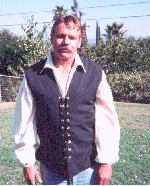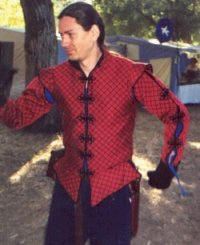
Overshirts
There are a few different types of garments made for the torso besides the tunic. Tunics were often used as shirts- the shirt as we know it today did not come into being until late medieval times/early Renaissance.
Redwallers sometimes wear jerkins, and occasionally jackets, though they don't often wear overgarments.
Jerkin
The jerkin was a vest-like shirt, often embroidered. It had square shoulders and buttoned down the front. The sleeves were loose-fitting down to the wrists, and were frequently decorated. Jerkins were fairly long as vest-type garments go, reaching to the mid-thigh. Some sources say that jerkins are typically leather and for protecting the undergarments, not for show- but sources vary. Redwall jerkins seem to be more functional than decorative, as they're often worn by adventurers.

A sleeveless jerkin Another sleeveless jerkin, made of leather
Doublet
The doublet was a padded, close-fitting body garment with or without sleeves worn over the shirt-like tunic. For doublets with sleeves, a certain odd way of wearing it came into fashion. This method was called slashing. The doublet sleeves would be slashed, and the sleeves of the garment beneath would be pulled through the slashes. Some sources say that the jerkin was worn over the doublet and it was the jerkin that was slashed, not the doublet.


A Spanish doublet A doublet without slashed sleeves
For more information:
 |
Men's Clothes: Medieval and Renaissance Clothing |